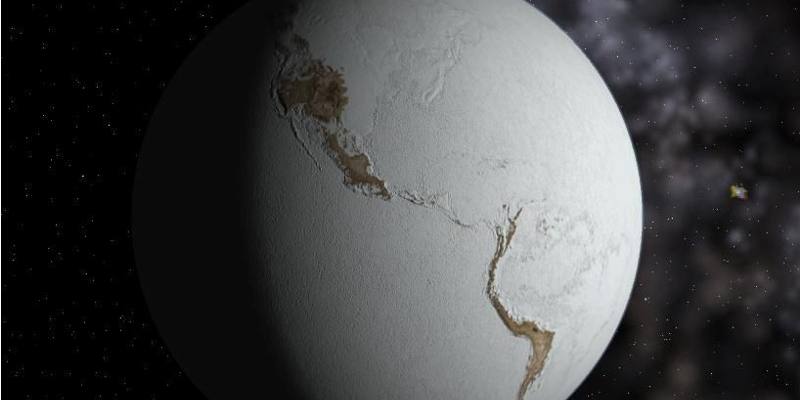
A new study may have resolved a fundamental question concerning the development of Earth as a planet on which animals could flourish: what came first, increasing levels of oxygen or complex animals?
Before now it was not known how quickly Earth’s oceans and atmosphere became oxygenated and if animal life expanded before or after oxygen levels rose.
The new study, published in Nature Communications, shows the increase in oxygenation began significantly earlier than previously thought and occurred in fits and starts spread over a vast period.
Since oxygen began to rise before animals evolved, it is therefore likely that early animal evolution was kick-started by oxygen, rather than animals evolving and then driving oxygenation themselves.
Professor Simon Poulton from the School of Earth and Environment at the University of Leeds, a co-author of the study, said: “It’s a chicken and egg situation: did the first simple animals evolve and bioengineer oxygen to higher levels, allowing more complex life to evolve on Earth, or did oxygen begin to rise first, thus allowing complex animals to evolve?”
In the study, an international team of researchers tracked what was happening with oxygen levels globally 770-520 million years ago (770-520 Ma) using new tracers in rocks across the US, Canada and China.
The first complex lifeforms are known to have emerged on Earth about 600 million years ago.
Samples of rocks that were laid down under the sea at different times were taken from different locations to piece together the global picture of the oxygen levels of Earth’s oceans and atmosphere.
By measuring selenium isotopes in the rocks, the team revealed that it took 100 million years for the amount of oxygen in the atmosphere to climb from less than 1% to over 10% of today’s current level.
This was arguably the most significant oxygenation event in Earth history because it ushered in an age of animal life that continues to this day.
Lead researcher, Dr Philip Pogge von Strandmann, from UCL, said: “We took a new approach by using selenium isotope tracers to analyse marine shales which gave us more information about the gradual changes in oxygen levels than is possible using the more conventional techniques used previously.
“We were surprised to see how long it took Earth to produce oxygen and our findings dispel theories that it was a quick process caused by a change in animal behaviour.”
During the period studied, three big glaciations – the ‘snowball Earth’ Sturtian (about 716Ma) and Marinoan (about 635Ma) glaciations, and the smaller Gaskiers glaciation (about 580Ma) – occurred whereby the Earth’s land was covered in ice and most of the oceans were frozen from the poles to the tropics.
During these periods, temperatures plummeted and rose again, causing glacial melting and an influx of nutrients into the ocean, which researchers think caused oxygen levels to rise deep in the oceans.
Increased nutrients mean more ocean plankton, which will bury organic carbon in seafloor sediments when they die. Burying carbon results in oxygen increasing, dramatically changing conditions on Earth.
Until now, oxygenation was thought to have occurred after the relatively small Gaskiers glaciation melted.
The findings from this study pushes it much earlier, to the Marinoan glaciation, after which animals began to flourish in the improved conditions, leading to the first big expansion of animal life.
Study co-author Professor David Catling, from the University of Washington, added: “Oxygen was like a slow fuse to the explosion of animal life. Around 635 Ma, enough oxygen probably existed to support tiny sponges.
Then, after 580 Ma, strange creatures, as thin as crêpes, lived on a lightly oxygenated seafloor. Fifty million years later, vertebrate ancestors were gliding through oxygen-rich seawater.
“Tracking how oxygen increased is the first step towards understanding why it took so long. Ultimately, a grasp of geologic controls on oxygen levels can help us understand whether animal-like life might exist or not on Earth-like planets elsewhere.”
Further information
The research, funded by NERC, is published in Nature Communications on 18 December 2015 – ‘Selenium isotope evidence for progressive oxidation of the Neoproterozoic biosphere’.
Professor Simon Poulton is available for interview. Please contact Sarah Reed, press officer at the University of Leeds on 0113 343 4196 or email s.j.reed@leeds.ac.uk
This research was carried out at Bristol University before Philip Pogge von Strandmann moved to UCL-Birkbeck Earth and Planetary Sciences in 2011 and David Catling moved to Earth and Space Sciences at the University of Washington in 2009.